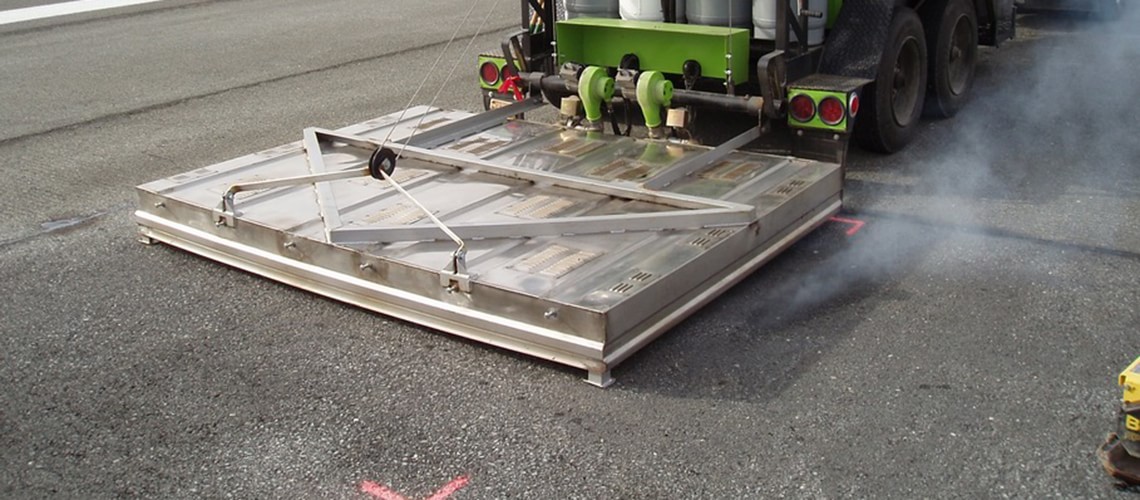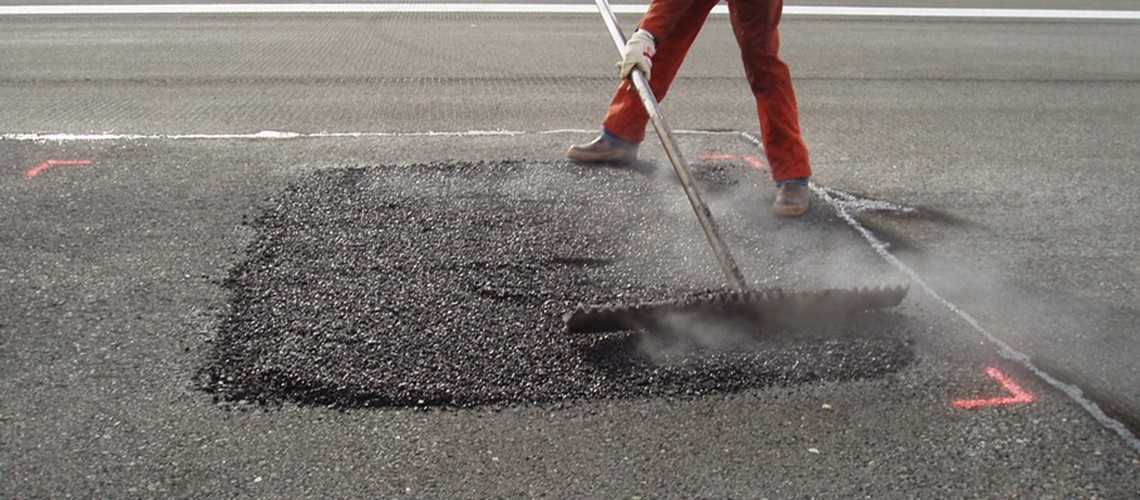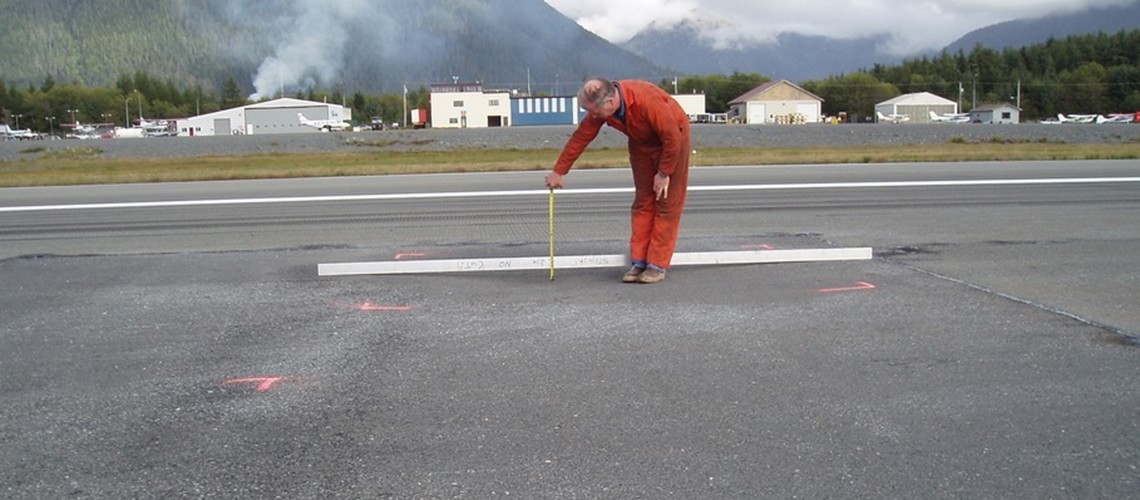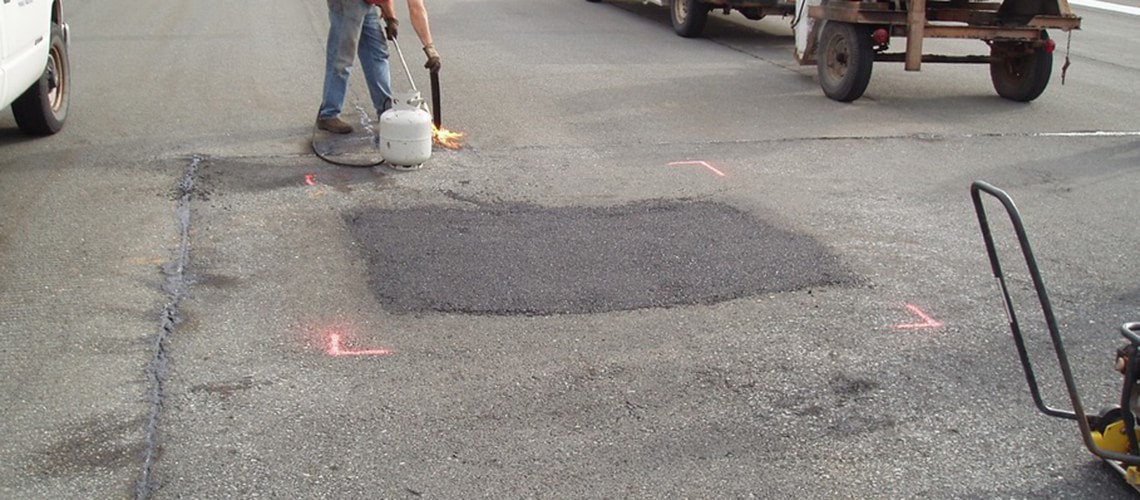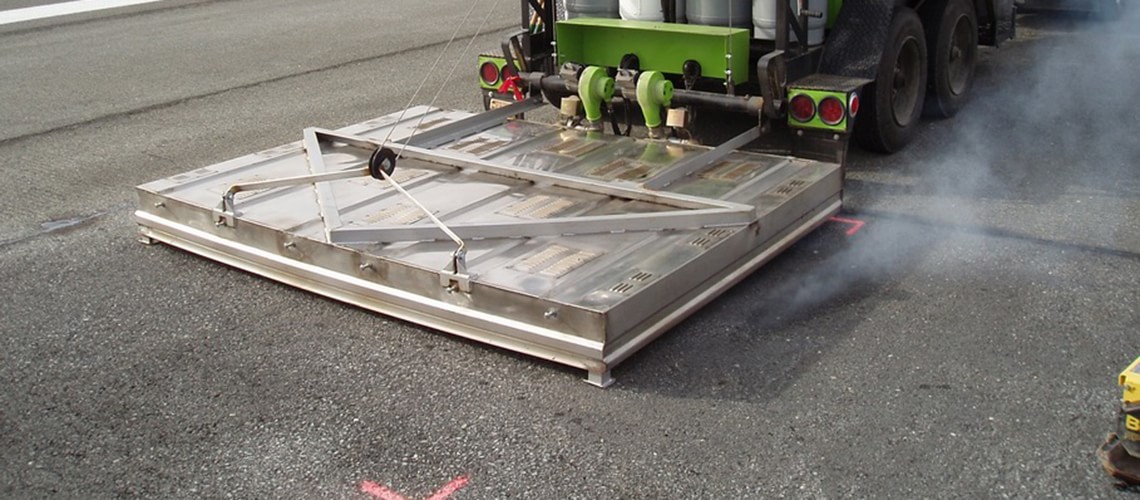Sitka’s Rocky Gutierrez Airport is an important connection for residents and tourists of this southeast Alaskan city – largely because it is on the archipelago of islands that make up the state’s panhandle. No roads service the town, and the ferry connection is difficult and expensive, particularly in winter.
So when repairs to a 20′ x 30′ section of the runway were needed, the Alaska Department of Transportation turned to infrared repair technology and EZ Street cold asphalt.
Infrared is known for its ability to repair frost heaves, seams, small potholes and cracked pavement areas. EZ Street cold asphalt was applied to level off a depression that resulted from the wear and tear of airplane traffic. The polymer-modified asphalt is a permanent pavement repair material.
While EZ Street cold asphalt does not require
pre-treatment of areas prior to repair, this was a practice of the customer, in these applications.
Note that Sitka handles much more than bush planes. Alaska Airlines and Harris Aircraft Services operate flights in and out of the airport, which includes 737s. According to Boeing Commercial Airplanes, manufacturer of the 737 series aircraft, the maximum take-off weight (MTOW) of a 737 ranges from 100,000 lb (50,300 kg) for the 737-100 to 187,700 lb (85,100 kg) for the 737 Next Generation (737ng). Compare that to the typical loaded-weight semi-tractor trailers that ply the nation’s highways with only 80,000 lb and which do not have to take flight at high speeds. The Federal Aviation Administration enforces demanding rules on airport runway quality.
The repair work in Sitka was done on a relatively balmy October day in 2007. But the characteristics of EZ Street cold asphalt allow that it could also be installed in bitterly cold temperatures as well – good to have on hand in cold weather environments such as Alaska.
Speak with your local representative before proceeding with a similar application to the one shown here.










